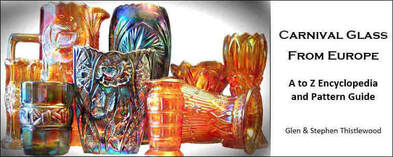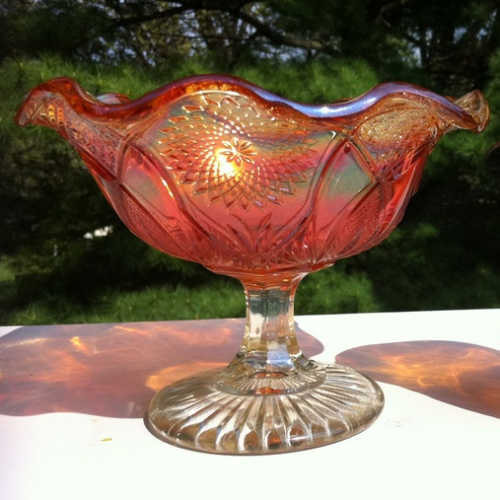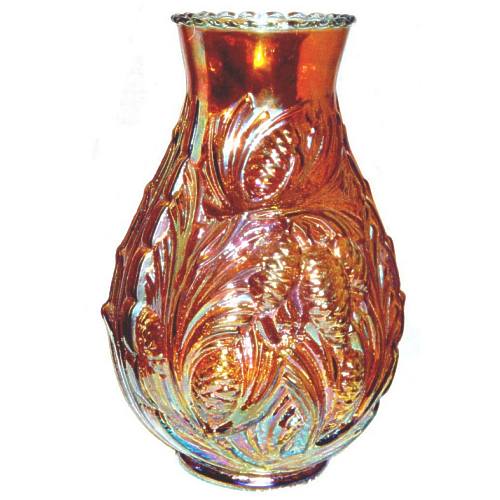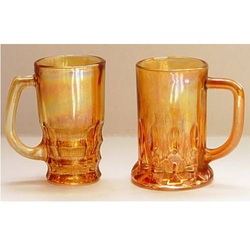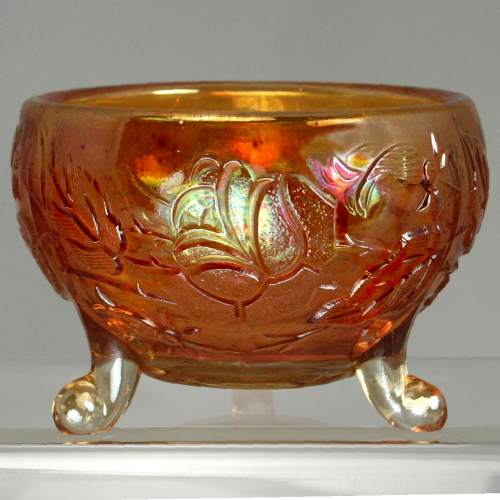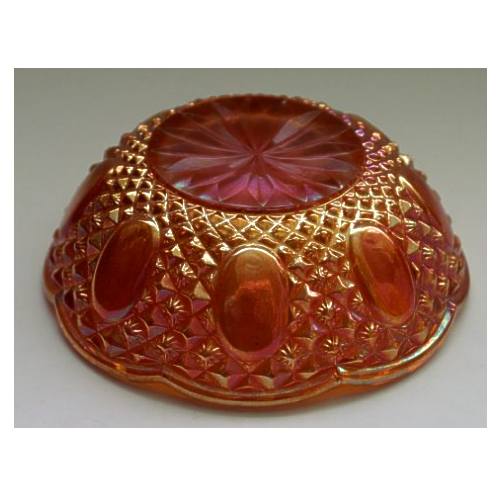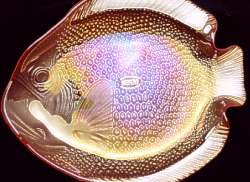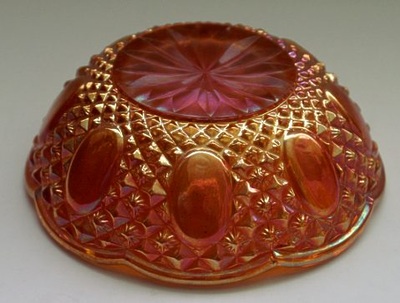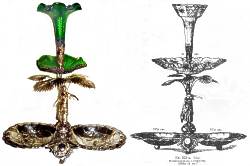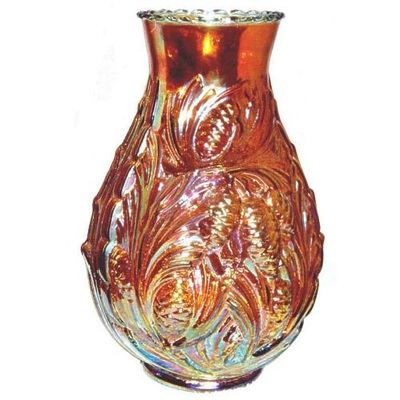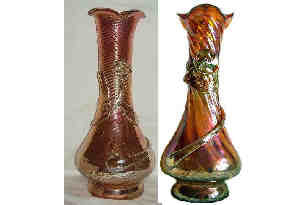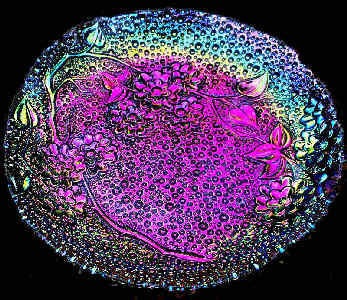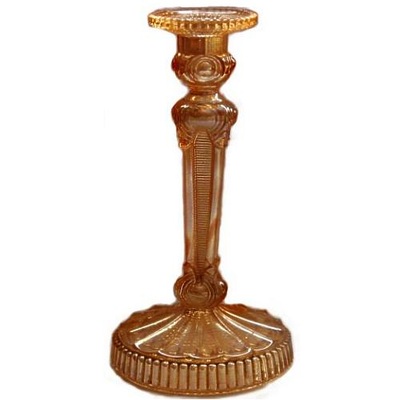Other European Makers
On our main homepage for Carnival Glass Makers, there are links to all the major European makers of Carnival Glass, namely:
England - Sowerby, Turnbull and Others
Czechoslovakia - Inwald, Rindskopf, "The Unknown Maker" probably Rosice, and Others
Germany - Brockwitz, Leinauer Glaswaren “LGW”
Nordic Countries - Eda, Riihimaki, Karhula-Iittala, Faglaviks and Others
Poland - Hortensja, Zabkowice and Others.
England - Sowerby, Turnbull and Others
Czechoslovakia - Inwald, Rindskopf, "The Unknown Maker" probably Rosice, and Others
Germany - Brockwitz, Leinauer Glaswaren “LGW”
Nordic Countries - Eda, Riihimaki, Karhula-Iittala, Faglaviks and Others
Poland - Hortensja, Zabkowice and Others.
|
On this page we have identified some of the lesser-known makers, and provided links to our latest information uncovered by ongoing research into European Carnival Glass.
In fact, there are almost 800 known Carnival Glass patterns from over 50 European glassmakers, and there is only one place to find out everything known about them, to date - it is our latest e-book! Patterns are meticulously identified with photos, catalogue illustrations, the reported colours and shapes, factory attributions and the original makers' name where known. It is a visual delight! Find out more about this e-book, and how to order it, click here: Carnival Glass from Europe or click on the image on the right. |
|
Leerdam, Holland
The British Pottery Gazette reported in 1931 that iridised glass was being made at Leerdam in Holland.
It is likely that it was produced from the mid-1920s to the 1930s. The moulds were mostly older Leerdam items - some Carnival items are patterns that are known in clear pressed glass from 1900-1906. More are being discovered and it is likely that other patters will be found or attributed. The quality of Leerdam’s Carnival production is best described a rather "mixed", but there are also some super examples. Above is a Dutch Star sugar, courtesy the late Michael O'Brien |
Coty-St Gobain, France
The parfumier Coty acquired glassworks in France in 1930, to make its own containers, but the factory went into liquidation in 1934. The plant was bought by Saint Gobain which also acquired two glassmakers in Brazil in 1937.
Some years ago, a richly iridised, blow-moulded vase was found in an auction in the USA. Its pattern was plump pine cones and it was named Fircone - as shown above. On the base was moulded FRANCE and what looked like COTY. Another vase was also found in the USA. More recently, a few found in Brazil but there is a difference – the Brazilian ones have a more elongated neck. We believe that the Fircone vase (with the short neck) was first made in the early 1930s at Coty’s glassworks in France, and after Saint Gobain acquired the factory, the mould was shipped over to Saint Gobain’s subsidiary in Brazil, probably in the 1940s or 1950s, modified and put into production there. |
Marinha Grande, Portugal
Marinha Grande (Portuguese Glassworks) has a history dating back to the 1700s. In their 1901 catalogue, we found images of some familiar items known in Carnival Glass, including a candlestick called Thebes (aka Patrician). It is likely that iridised production was contemporary with other European factories. We also know of other marigold Carnival Glass being made in the area, probably a later date.
A spin-off from Marinha Grande was called Crisal and several Carnival items are known with the Crisal name moulded on the base, such as the miniature tankards shown above – they might have been made at any time between 1940 and 1975. Read more about Marinha Grande |
|
Walther – VEB Sachsenglas, Germany
August Walther and Sons were contemporary with Brockwitz, located not far away from Brockwitz near Dresden in Germany. The marigold footed bowl shown here is Waltraut.
Walther merged with another company in 1932 and became Saschsische Glasfabrik August Walther and Sohne. After WW2 the company was nationalised and became VEB Saschenglas. They made Carnival during two periods – early (contemporary with other European makers) and again in the 1950s and 1960s. |
Bayel, France
When we studied the 1927 - 1928 Bayel catalogues we saw the word irisé - iridised - in other words, Carnival Glass. Then fellow researcher John Hodgson spotted a catalogue image from the Bayel 1927 catalogue showing a "mystery" bowl that he owns - Moulé Médaillons, shown above.
There are also Carnival items marked “France” - makers as yet unknown: Decoratif and Art Deco avec Rectangles |
Read and See More about Other European Makers - click on any image.
